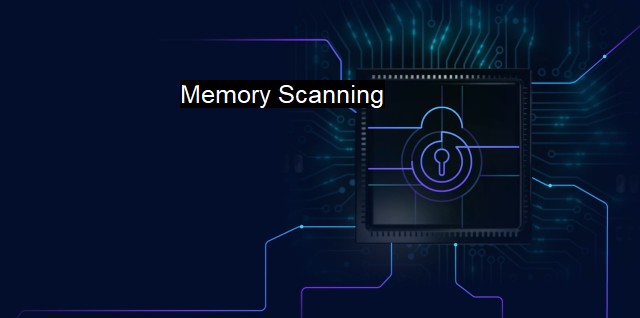What is Memory Scanning?
Enhanced Cyber Defense: The Importance and Functionality of Memory Scanning in Proactive Malware Detection
Memory scanning is an indispensable feature of cybersecurity approaches and antiviruses. It refers to the systematic inspection of the computer's Random Access Memory (RAM) to pinpoint potential dangers and threats. These threats can be any form of malicious small-scale codes, rootkits, spyware, ransomware, and more. All these threats majorly aim at affecting the functionalities of the computer systems, either by disabling them or by stealing crucial data and information.A computer's memory, consisting of RAM and memory components like Read-Only Memory (ROM) and Cache, provides real-time information about the system operations when reading or executing pieces of code. Suitable for real-time scanning and effective identification of anomalies, memory scanning stands out as an essential cybersecurity measure. Some of the most advanced memory scanning techniques can even detect in-memory threats that are coded to be invisible to conventional detection algorithms.
In cybersecurity and antivirus measures, memory scanning plays a crucial role, particularly when coupled with real-time antivirus scanning, which maintains a constant vigil on the system's status against threats.
Where there are standalone threats, malicious software, also known as malware, pose a greater danger, usually in the form of applications functioning in the background with harmful intentions. These codes are stored within the computer's memory, maintaining their persistence over long durations while causing harm. Thus, memory scanning is beneficial in identifying and eliminating such threats.
Modern malware utilizes advanced coding techniques to adamantly abide by the RAM without being evident in the superficial system scan. Such major threats, which 'live' in the memory while acting unobtrusively until the execution of a certain triggered action, are generally referred to as resident viruses. They challenge the capabilities of traditional antiviral measures by employing techniques like obfuscation and polymorphism to evade detection.
Memory Scanning operations are set to work systematically. The proactive standard frequency-based scans are run at regularly set intervals maintaining constant vigilance in addition to the exhaustive system scans. There are also the triggered scans resulting from certain activities within the computer system such as the installation of a new program, a new file download, a system malfunction alert, etc. These trigger scans help in the real-time checking of the computer system performance and safety against threats.
The efficiency of an antivirus solution and its effectiveness at negating threats significantly depends upon the accuracy and precision of its memory scanning abilities. In other words, memory scanning forms the backbone of an antivirus program and thus demands superior algorithms to identify and negate all possible threats.
With developments in the illegal cyber activities landscape, accompanied by the surfacing of torjan worms and viruses that encrypt data files to demand ransom (ransomware), memory scanning is now more crucial than ever before. Sophisticated memory scanner built into antivirus software can help prevent mass disruption and productivity loss caused by these increasingly more complex cyber threats.
Memory scanning is an advanced technique in cybersecurity practices extensively used to detect and combat security threats hiding within the computer’s memory. Its key advantage is the real-time surveillance that allows prompt identification and removal of threats before any significant harm occurs. In this ever-evolving digital age, enhanced memory scanning capabilities are indeed vital to maintain the safety and optimal performance of computer systems, making it an integral component of cybersecurity and antivirus practices.

Memory Scanning FAQs
What is memory scanning in cybersecurity?
Memory scanning is a technique used by antivirus software to scan the computer's memory for malicious code or processes in real-time. It checks the running processes and memory for any suspicious behavior and tries to identify any threats that may be hiding in the system's RAM.How does memory scanning work?
Memory scanning works by scanning the computer's memory and checking for malicious code or processes. The antivirus software creates a snapshot of the memory and compares it to a database of known virus signatures. If it finds any signatures that match known viruses, the antivirus software will alert the user and take appropriate action.Why is memory scanning important for cybersecurity?
Memory scanning is important for cybersecurity because it helps to detect and remove malicious software before it can cause damage to the system. It provides real-time protection by scanning the computer's memory for threats and stopping them before they can execute.Can memory scanning identify all types of malware?
While memory scanning can detect many types of malware, it may not be able to detect all types. For example, some malware can be designed to evade antivirus software detection, including memory scanning. However, memory scanning is still an effective tool for detecting and stopping many types of malware in real-time.| | A | | | B | | | C | | | D | | | E | | | F | | | G | | | H | | | I | | | J | | | K | | | L | | | M | |
| | N | | | O | | | P | | | Q | | | R | | | S | | | T | | | U | | | V | | | W | | | X | | | Y | | | Z | |
| | 1 | | | 2 | | | 3 | | | 4 | | | 7 | | | 8 | | |||||||